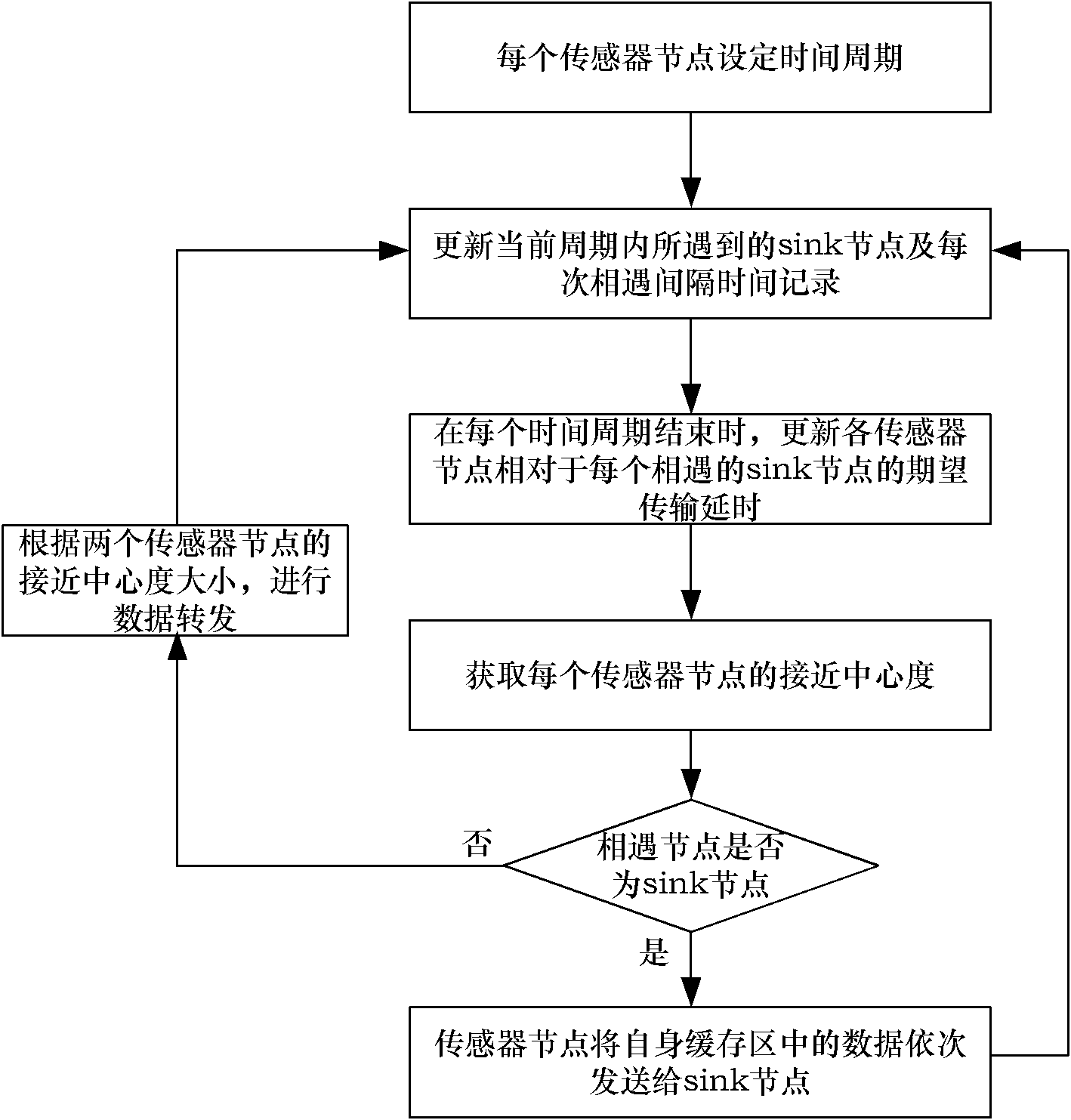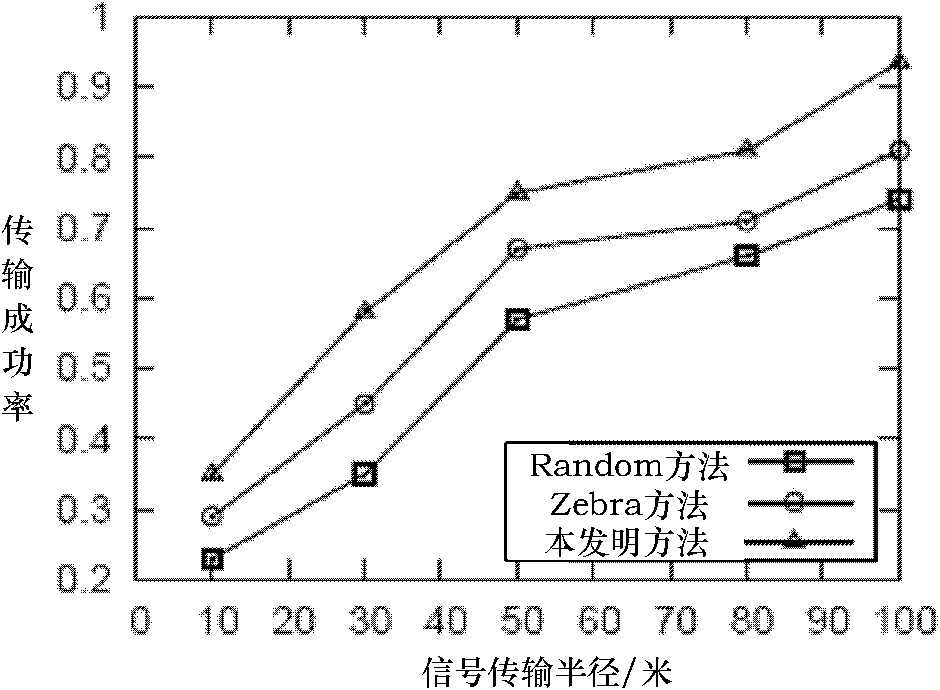Data transmission method for opportunistic mobile sensor network based on closeness centrality
A technology of network data transmission and mobile sensor, applied in the field of communication, can solve the problems of lack of data transmission, and achieve the effect of high transmission success rate, low transmission delay and good robustness
- Summary
- Abstract
- Description
- Claims
- Application Information
AI Technical Summary
Problems solved by technology
Method used
Image
Examples
Embodiment Construction
[0035] The present invention will be further described in detail below in conjunction with accompanying drawings and examples.
[0036] The application scenario of the data transmission method of the opportunistic mobile sensor network based on proximity centrality proposed by the present invention is composed of sparsely distributed sensor nodes and several sink nodes, such as figure 1As shown, the black dot represents the sink node, and the white dot represents the mobile sensor node. The sensor nodes regularly collect various surrounding data such as temperature, humidity, air pollutants, etc. during the movement, and upload these data to the sink node when they encounter the sink node. The position of the sink node is fixed, and the mobile characteristics of the sensor nodes in the network are inconsistent, some are more active, and the mobile area is relatively large; on the contrary, some sensor nodes do not move frequently. Due to sparse nodes, the network is disconnec...
PUM
 Login to View More
Login to View More Abstract
Description
Claims
Application Information
 Login to View More
Login to View More - R&D
- Intellectual Property
- Life Sciences
- Materials
- Tech Scout
- Unparalleled Data Quality
- Higher Quality Content
- 60% Fewer Hallucinations
Browse by: Latest US Patents, China's latest patents, Technical Efficacy Thesaurus, Application Domain, Technology Topic, Popular Technical Reports.
© 2025 PatSnap. All rights reserved.Legal|Privacy policy|Modern Slavery Act Transparency Statement|Sitemap|About US| Contact US: help@patsnap.com



